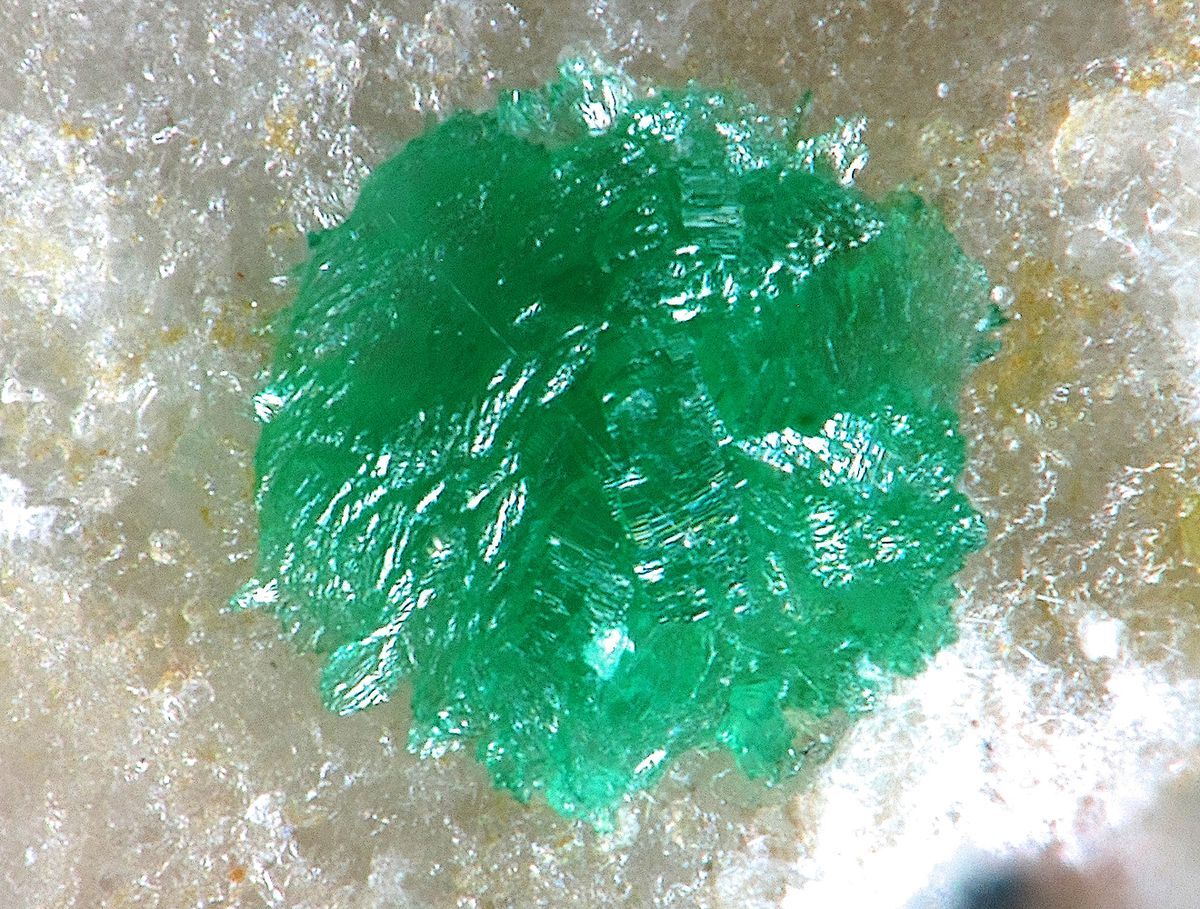
Cesbronite is a rare mineral that fascinates geologists and collectors alike. But what makes Cesbronite so special? This unique mineral, discovered in the 20th century, boasts a striking green hue and forms in specific geological environments. Found primarily in oxidized zones of arsenic-rich hydrothermal deposits, Cesbronite's rarity adds to its allure. Its chemical composition includes copper, arsenic, and oxygen, making it a subject of study for mineralogists. Collectors prize Cesbronite for its vibrant color and crystal structure. Whether you're a budding geologist or a seasoned collector, learning about Cesbronite can deepen your appreciation for Earth's hidden treasures.
Key Takeaways:
- Cesbronite is a rare, green mineral with a unique composition of copper and tellurium. It's found in small quantities in Mexico and the USA, fascinating collectors and researchers alike.
- Its bright green color and soft crystals make cesbronite a prized possession for mineral collectors. Studying this rare mineral helps us understand how tellurium minerals form and contributes to scientific research.
What is Cesbronite?
Cesbronite is a rare mineral that has fascinated geologists and mineral enthusiasts alike. Its unique properties and limited occurrence make it a subject of intrigue. Here are some captivating facts about this mineral.
-
Cesbronite is a copper tellurate mineral, which means it contains both copper and tellurium.
-
It was first discovered in the Bambollita mine in Mexico, a location known for its rich mineral deposits.
-
The mineral was named after French mineralogist Fabien Cesbron, who made significant contributions to the study of tellurium minerals.
-
Cesbronite typically forms in the oxidation zones of copper-tellurium deposits, where it can be found alongside other rare minerals.
Physical Characteristics of Cesbronite
Understanding the physical properties of cesbronite helps in identifying and studying it. Here are some key characteristics:
-
Cesbronite crystals are usually small, often microscopic, making them difficult to spot with the naked eye.
-
The mineral exhibits a bright green color, which is quite striking and makes it easier to distinguish from other minerals.
-
It has a monoclinic crystal system, meaning its crystal structure is asymmetrical with three unequal axes.
-
Cesbronite has a Mohs hardness of around 3, making it relatively soft compared to other minerals.
Chemical Composition and Structure
The chemical makeup of cesbronite is what sets it apart from other minerals. Here are some details:
-
Its chemical formula is Cu₃(TeO₄)(OH)₄, indicating the presence of copper, tellurium, oxygen, and hydrogen.
-
The mineral's structure includes layers of copper and tellurium atoms, which contribute to its unique properties.
-
Cesbronite is often found in association with other tellurium minerals like tellurite and emmonsite.
-
The presence of hydroxyl groups (OH) in its structure is a key feature that influences its formation and stability.
Occurrence and Locations
Cesbronite is not commonly found, making its discovery even more exciting. Here are some notable locations:
-
Besides the Bambollita mine in Mexico, cesbronite has also been found in the Good Hope mine in Colorado, USA.
-
The mineral is typically found in small quantities, often as tiny crystals or crusts on other minerals.
-
Cesbronite is usually associated with secondary mineralization processes, where it forms as a result of chemical reactions involving primary minerals.
Uses and Significance
While cesbronite is not widely used in industrial applications, it holds importance in other areas. Here are some insights:
-
The mineral is primarily of interest to mineral collectors and researchers due to its rarity and unique properties.
-
Cesbronite specimens are highly sought after by collectors, often fetching high prices in the mineral market.
-
Studying cesbronite can provide valuable insights into the geochemical processes that lead to the formation of tellurium minerals.
-
The mineral's bright green color and crystal structure make it a fascinating subject for educational purposes, helping students and enthusiasts learn about mineralogy.
-
Cesbronite's rarity and unique composition make it an important mineral for scientific research, contributing to our understanding of mineral formation and geochemistry.
The Final Word on Cesbronite
Cesbronite, a rare and captivating mineral, has intrigued scientists and collectors alike. Its unique properties and stunning appearance make it a gem in the world of geology. Found primarily in hydrothermal veins, this mineral boasts a striking blue-green color due to its copper content. It's not just a pretty face; cesbronite's formation process and chemical composition offer valuable insights into geological processes.
Collectors prize cesbronite for its rarity and beauty, often showcasing it in mineral exhibitions. Its discovery has added a new chapter to the study of minerals, highlighting the endless wonders our planet holds. Whether you're a seasoned geologist or a curious enthusiast, cesbronite's allure is undeniable. Keep an eye out for this fascinating mineral, and you'll be joining a select group who appreciate its unique charm.
Frequently Asked Questions
Was this page helpful?
Our commitment to delivering trustworthy and engaging content is at the heart of what we do. Each fact on our site is contributed by real users like you, bringing a wealth of diverse insights and information. To ensure the highest standards of accuracy and reliability, our dedicated editors meticulously review each submission. This process guarantees that the facts we share are not only fascinating but also credible. Trust in our commitment to quality and authenticity as you explore and learn with us.
